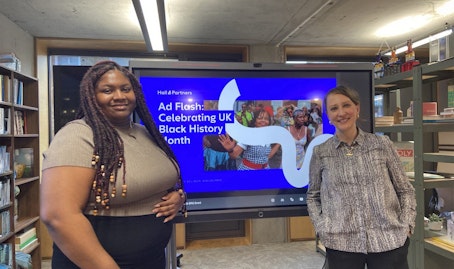Perspectives

Research has shown that consumers prefer brands that are environmentally conscious, doing their bit for the planet. Marketing programs, such as the ‘Buy a Shoe, Plant a Tree’ by Etnies have become popular ways to tick the conscientious box, especially for younger consumers.
Ticking the multiple boxes of ways to show you are doing your bit for the environment is one approach. However, many firms need to encourage sustainable consumer behaviors in order to meet their sustainability goals. Though this may be a necessary step, it is not an easy one in a consumer driven economy. Consumers are demanding more from the brands they love, but they will also continue to prioritize convenience, unless brands can effectively communicate that there is a trade-off between consumer convenience and sustainability.
There probably isn’t a single brand or retailer that is not aware of the plight that retail has on the planet – from production to distribution and waste. Yes, some of this damage can be offset by planting trees, or even eliminating free returns, but brands must find ways to communicate that truly making a difference could require a corporate and consumer partnership.
Creating partnerships with people
A good example is Purple Mattress. A mattress is a highly considered purchase. Many consumers are wary of buying a mattress without having first tested it out. Some consumer rating agencies even recommend sleeping on a mattress for a week or more in order to determine if it is the right one for you. In order to accommodate these consumer preferences, many mattress manufacturers offer a 90- to 100-day free trial. After a thorough test drive, if the mattress doesn't work, consumers can send it back.
However, this is not like trying out a pair of shoes by walking up and down the aisle at a shoe store. Once a mattress is opened, it is considered a perished good and can no longer be sold as new. Moreover, unlike a pair of shoes, a mattress can weigh over 200 pounds and is not easy to ship back to a factory, especially if it arrived in a special vacuum sealed box that a homeowner will never be able to replicate.
What often happens is that many of these lightly used mattresses end up in a landfill. To solve this issue, Purple invites consumers to donate unwanted mattresses to a local school, fire department, or other charity. Strategies like this create a corporate/consumer partnership. Purple meets the consumer demand by offering a 100-day trial, but the consumer agrees to dispose of an unwanted mattress in a more sustainable way.
Indeed, most brands are working hard to limit their environmental impact by encouraging sustainable shopping behavior with campaigns that promote ‘Buy less Buy Better’ and airing their sustainable credentials in everything from product packaging to advertising.
Consumers prefer brands that act responsibly
Consumers of course are increasingly conscious of how the brands they buy act towards people and the planet as a direct reflection of their own environmental footprint. They are even prepared to switch to a more environmentally conscious brand when their favorite brands act irresponsibly, but there are opportunities to recruit consumers into more sustainable initiatives.
The hospitality industry provides another good example of these consumer/corporate partnerships. Many hotel chains place signs in guest rooms inviting patrons to reuse towels, or to put off refreshing their bedding for a few days. Fresh towels and linens are a nice perk, but they are also not free.
These campaigns invite guests to join with the hotel chain in reducing the amount of energy and water used by the hotel. Cynics may argue this is simply a cost savings strategy by the hotel. But if executed well, and performed in a transparent manner, these campaigns can raise positive perceptions of the brand.
Brands can make consumers feel better about their actions
Consumers of course don’t always evaluate all of their actions as contributory factors to the world’s new environmental goals. However brands can make them feel better about the impact of their consumption by being transparent about their own sustainability goals and practices and clearly show how consumers can help – just make sure they align with marketing practices too.
In order to recruit consumers to help in corporate sustainability efforts, we recommend three helpful tips:
1) Make participation voluntary
If consumers can opt-in, they are much more likely to feel they are participating in something positive instead of cynically concluding they are simply being manipulated into following the latest corporate cost-savings plan.
2) Share details with consumers
Be transparent about the impact these partnerships are having. In the hotel example above, consumers may think that their impact is insignificant, and therefore not worth the trouble. However, like most things, the real value comes as these things scale. A hotel might say something like, “Last month guests helped us save over 10,000 gallons of water.”
3) Generously thank consumers for their positive impact
Avoid taking all of the credit for the results achieved. This is a partnership, after all, and there is a big difference between communicating that “We at Brand X planted 1 million trees last year,” and “Conscientious customers partnered with us to plant 1 million trees last year.” The second option thanks consumers for their help and encourages them to get involved in future initiatives.
About the author
Sam Sturgeon, PhD, is the Global Head of Marketing Sciences at Hall & Partners. He completed a dual-title PhD in Human Development and Demography and has over 15 years of experience as an applied statistician, demographic forecaster, and mixed-methods market researcher. He loves answering complex questions with innovative research methods and then bringing compelling stories to life through captivating data visualization. His work on marriage and dating has been featured in Politico, the Wall Street Journal, USA Today, the Washington Post, and other publications.








